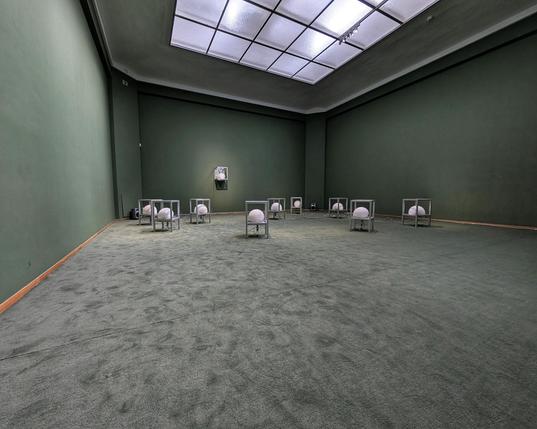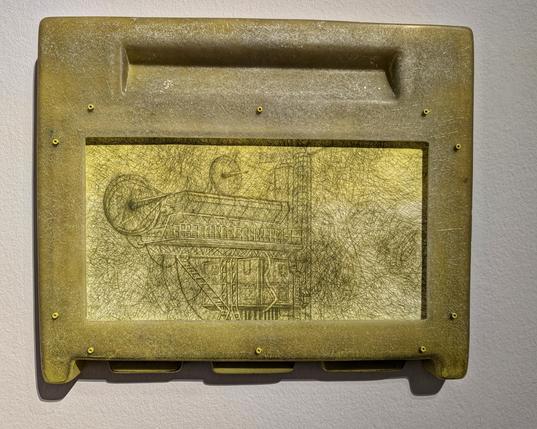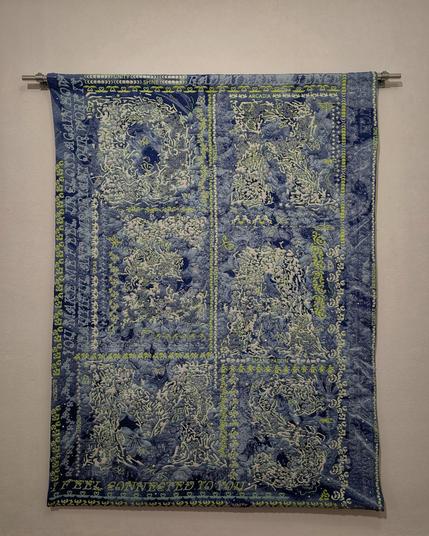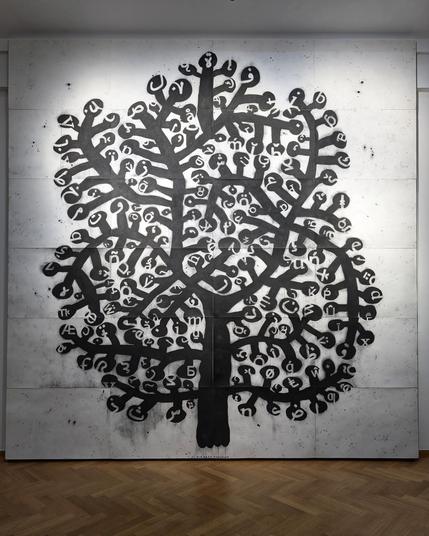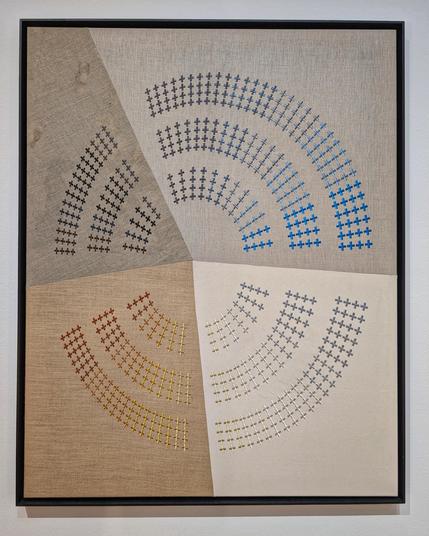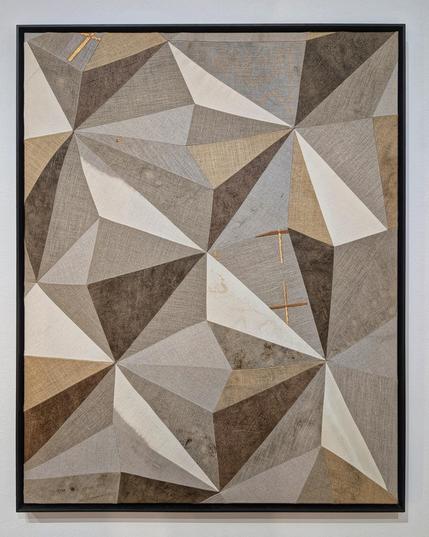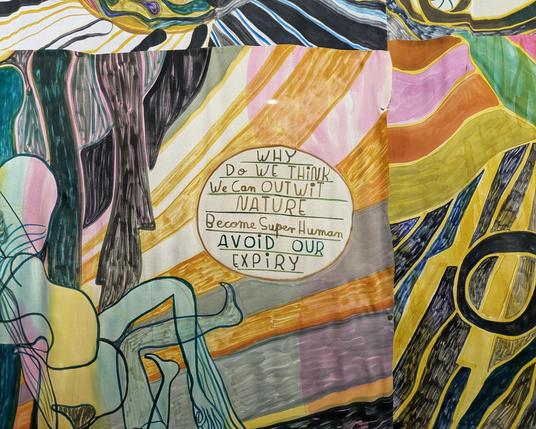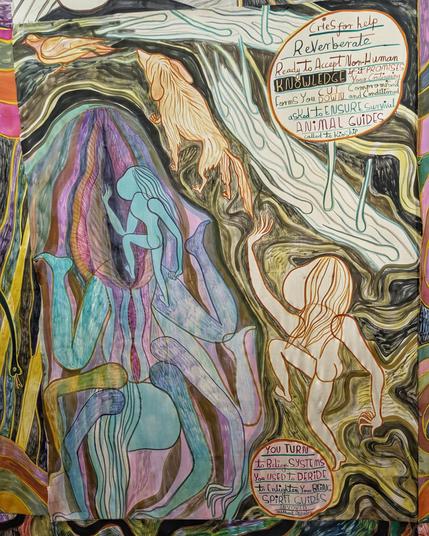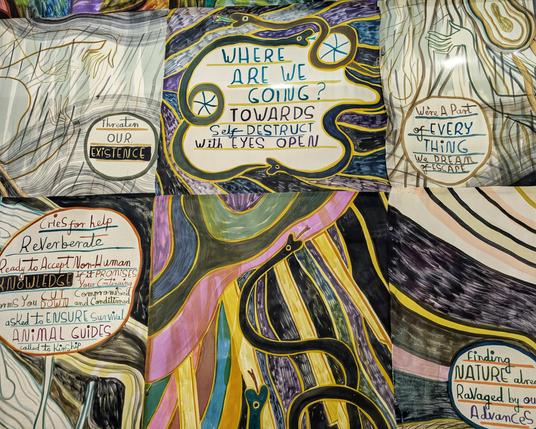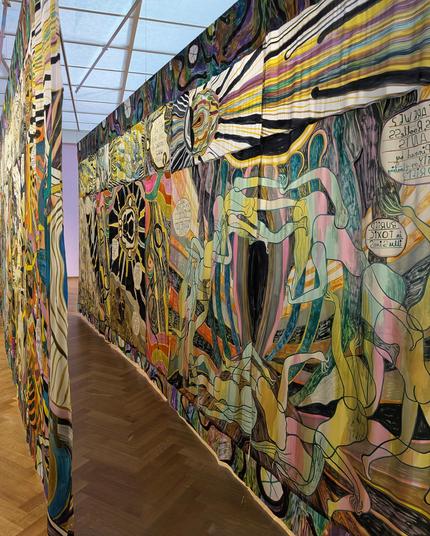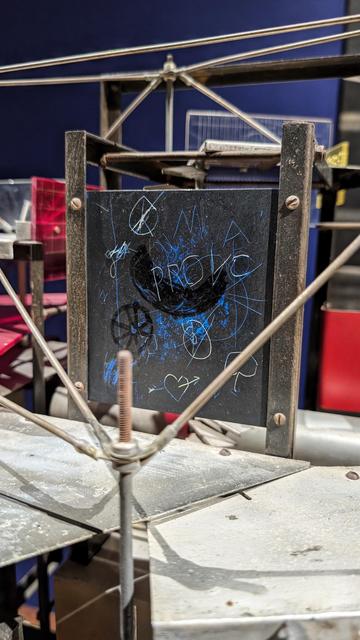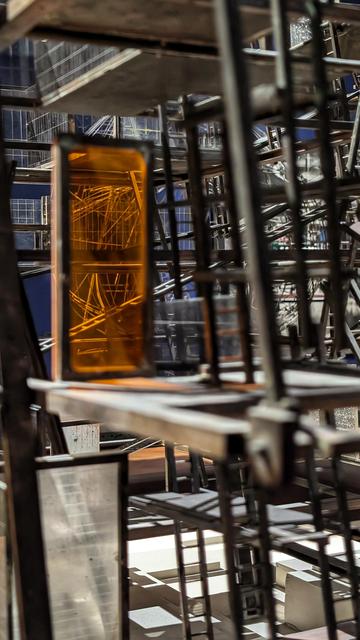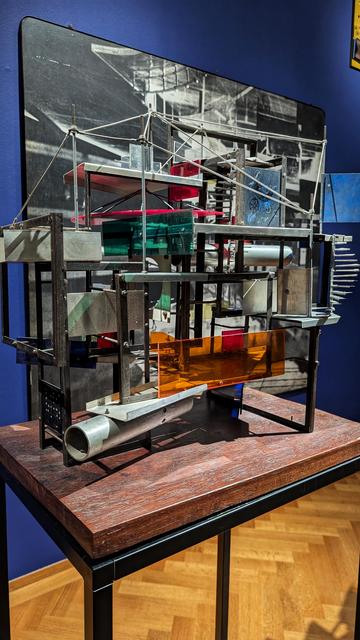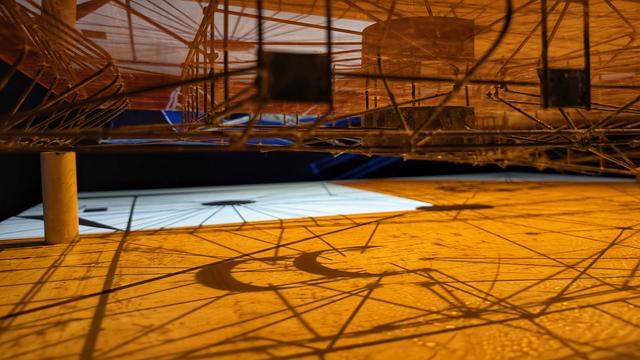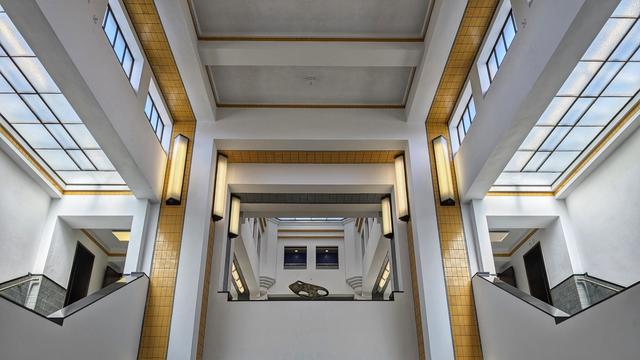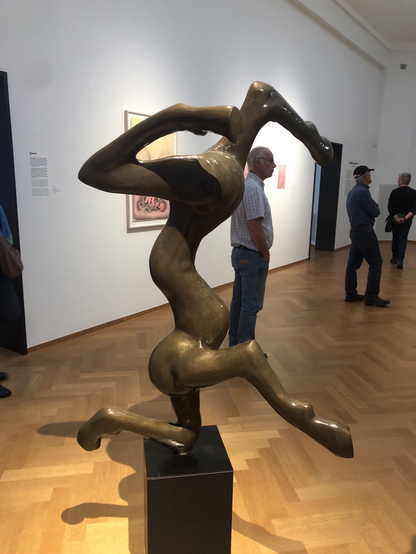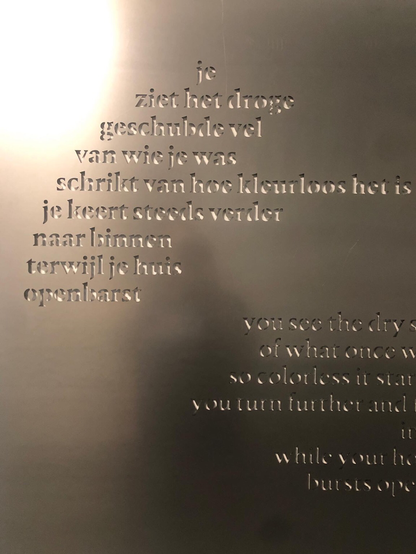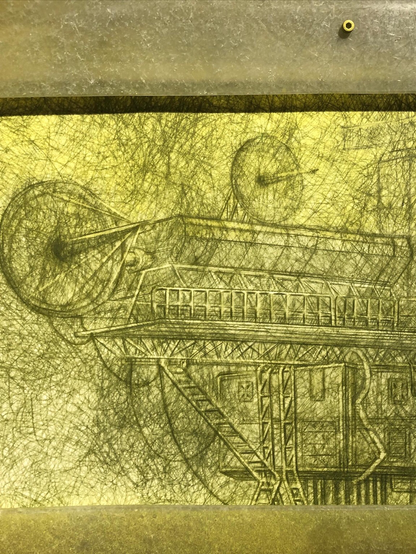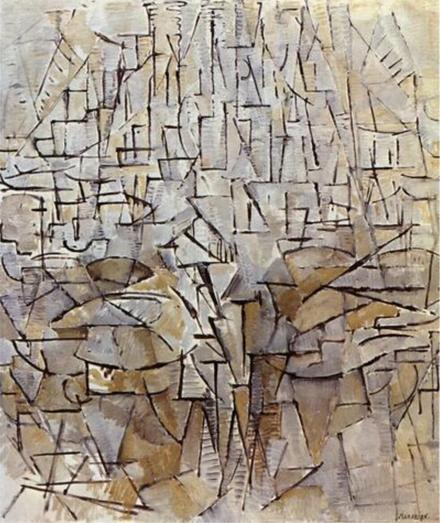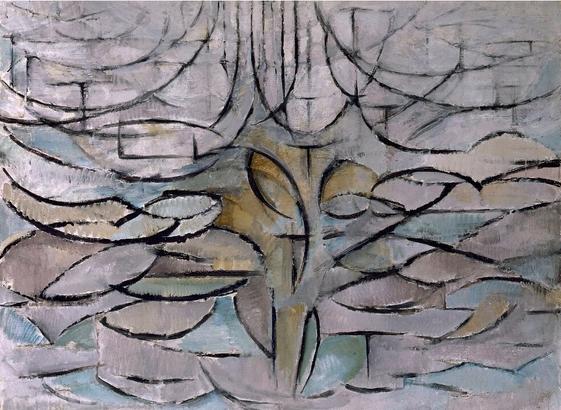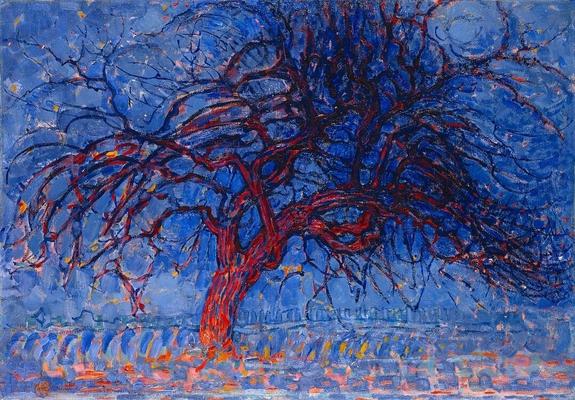In a fully green room, a serieus question is asked.
(From the museum's description)
Harrison Pearce explores the relationship between tech-nology, humanity and creativity. His kinetic sculptures form a network with its own rules, where information appears to be exchanged. According to Constant's thinking people should have more opportunity to be playful and inventive now that work is becoming more and more automated. Today's reality is more complex: our creativity is often facilitated by large tech companies that thereby increase their own power.
Pearce finds this contradiction interesting. The devices in this room are based on a scan of his own brain.
Do machines know more than you do about who you are? In this installation, human intelligence and machine become one big hybrid organism. The musical score, featuring the classical viola da gamba, is by Liam Byrne.
And towards the end of the exhibit, I was moved to see a work by Sadik Kwaish Alfraij.
(From the museum's description)
Sadik Kwaish Alfraji tells stories about movement, exile and language. His work often originates in a personal memory of Iraq, where he was born. Using charcoal and ink, he incorporates his dreams and memories into a clear, monumental image. Alfraji is intrigued by the way language shapes us. Alphabet Tree refers to the books children use to learn to read and write. The drawings of trees clarify the relationship between symbols and sounds.
Trees are also important symbols in many belief systems, where they represent the cycle of life. In Assyrian reliefs -an important source of inspiration for Alfraji a date palm would be depicted as the tree of life. The Assyrian Empire, like Babylon, was situated in Mesopotamia, which we know today as Iraq. This region is regarded as the birthplace of our knowledge of the universe.
#MuseumTips #KunstmuseumDenHaag #HarrisonPearce #SadikKwaishAlfraji
